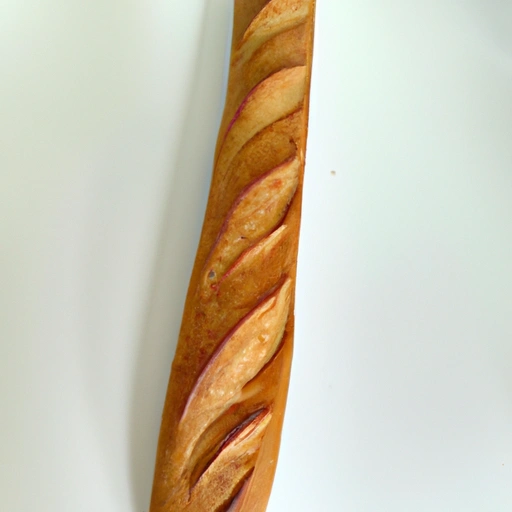Baguette
Description

The baguette is a long, thin loaf of French bread that is characterized by its length, crisp crust, and chewy interior. This iconic bread is known for its golden-brown crust and light, airy crumb. Its ingredients typically include wheat flour, water, yeast, and salt. In recipes, the measurements for these ingredients can be found in both metric (grams, milliliters) and imperial (ounces, cups) units, catering to a global audience. For example, a typical recipe might call for about 500g (approximately 17.6 oz) of flour and 300ml (about 1.3 cups) of water.
Common uses
Baguettes are commonly used as a base for sandwiches, as an accompaniment to cheese and charcuterie boards, or simply as a vehicle for butter and jams. They are also often served alongside soups and salads or used to create crostini and bruschetta for appetizers.
Nutritional value
Calories
A typical baguette contains approximately 120 calories per 50g serving (roughly 1 inch of a standard loaf).
Protein
Baguettes provide about 4g of protein per serving, making them a moderate source of this nutrient.
Fat
With about 1g of fat per serving, baguettes are considered low-fat.
Carbohydrates
A 50g serving of baguette contains about 25g of carbohydrates, primarily in the form of starches.
Vitamins
While not a significant source of vitamins, baguettes contain small amounts of B vitamins, crucial for energy metabolism.
Minerals
Baguettes provide trace amounts of minerals like calcium and iron, essential for bone health and oxygen transport in the blood.
Health benefits
As a source of carbohydrates, baguettes can provide quick energy. The B vitamins in the bread help with energy production in the body, and the dietary fiber, although not abundant, can aid digestion if the bread is made from whole-grain flour.
Potential risks
For individuals with gluten intolerance or celiac disease, consuming baguettes can be harmful. Additionally, baguettes are high in carbohydrates and low in fiber, which may not be ideal for those managing blood sugar levels or seeking weight loss.
Common recipes
Baguettes are often used in recipes such as traditional French sandwiches like the jambon-beurre (ham and butter) and can be the base for various crostini and bruschetta toppings.
Cooking methods
While baguettes are typically purchased pre-made, they can be baked at home. The dough is often proofed, shaped, scored, and baked at a high temperature to achieve the characteristic crust.
Pairing with other ingredients
Baguettes pair well with a variety of foods including cheeses, cured meats, pâtés, and jams. They also complement soups, salads, and can be used to sop up sauces in heartier dishes.
Summary
The baguette is a versatile and beloved bread that plays an essential role in many culinary traditions. Its simplicity and distinct texture make it a favorite around the world, and understanding its history and uses can enhance any dining experience.